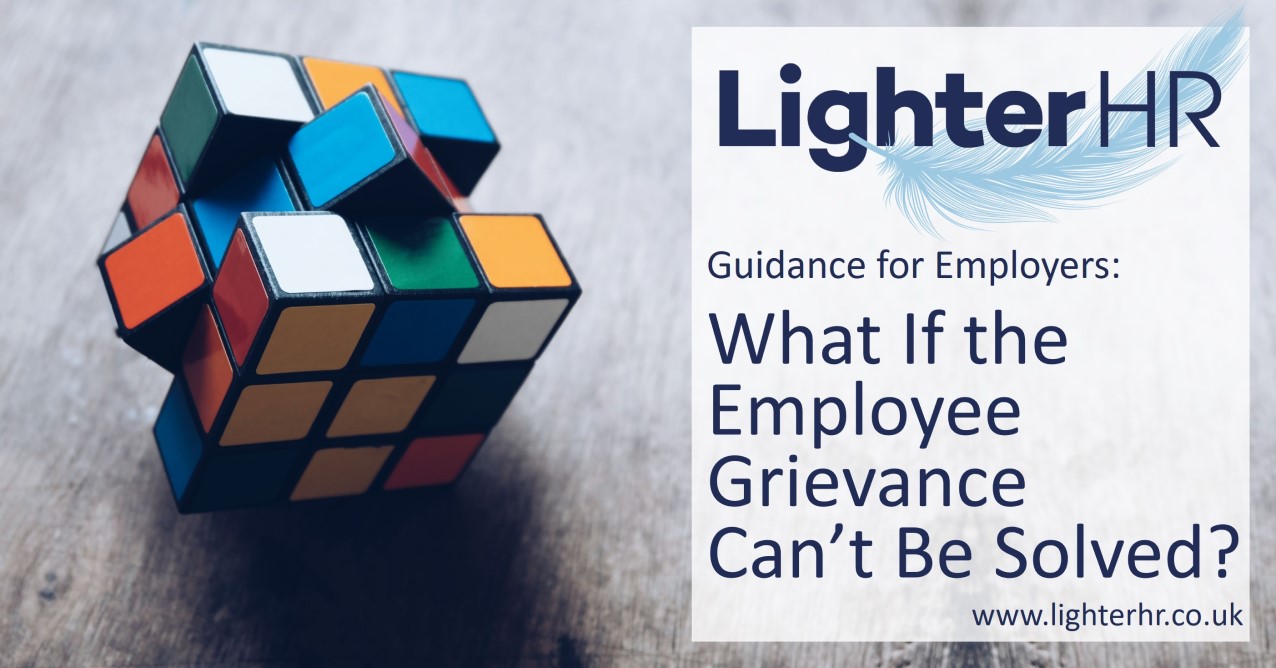You’ve done everything in your power to solve your employee’s grievance. You’ve followed the correct process for dealing with grievances, but there’s just no way of getting them to a point where they are happy with the outcome.
So, what happens next?
Time to read out post: 5 minutes
In this post, we’ll look at what employers can do after a grievance process has been followed but there’s no resolution, covering:
1. What Are an Employer’s Obligations Regarding Employee Grievances?
The first thing that you need to remember is that you are not legally obliged to give the employee the outcome they are looking for from a grievance! Your obligation is to make sure that you have investigated the grievance. You need to demonstrate that you’ve been fair and thorough and that your response has been reasonable.
If you find yourself in a position where the employee is unhappy with the outcome then ask yourself the following questions:
- Did you respond to the original grievance in a timely manner?
- Did you conduct a thorough and impartial investigation?
- Did you arrange a grievance hearing with the employee?
- Was the employee given an opportunity to review the findings of the investigation?
- Was the employee given the right to be accompanied at the hearing by a colleague or trade union representative?
- Did you write to all parties confirming the outcome of the grievance hearing?
- Did you give the employee an opportunity to appeal against the outcome of the grievance?
- If the employee appealed, did you undertake any necessary further investigation before holding a second hearing?
- Did you write to all parties following the appeal hearing confirming the outcome?
- Do you feel that your response to the grievance has been appropriate given all of the circumstances and evidence?
If you are happy with all of the above then you can be confident that you have addressed the grievance in an appropriate manner and fulfilled your legal obligations.
2. What’s after the Formal Grievance?
If the employee feels very strongly that their treatment and the outcome of the grievance is unfair and that their position with your business is untenable then they may make the decision to resign from their post and bring a claim against you for constructive dismissal. Bringing a claim for constructive dismissal is actually fairly difficult. You can find out more here about the threat of constructive dismissal claims.
The bigger challenge you face is that the employee remains in your employment but is unable to move past their grievance. They are demotivated and may become disruptive in the work place. It is this situation that you need to be prepared to address.
3. Getting the Employee over the Formal Grievance
The first step will be to have an informal meeting with the employee allowing them to vent any remaining frustration. You make it clear that this is the last time the matter will be spoken about. You need to stand firm in the fact that you believe that the matter has been addressed appropriately. However, you also need to acknowledge that may be difficult for the employee to move on. Explain that it is vital for all parties that the matter now be closed.
If the employee becomes disruptive in the work place then you may need to consider a more formal course of action. You don’t want to take a heavy handed approach if it can be avoided. Equally you need to ensure that your business continues to function and that other employees aren’t impacted by the low morale and mutterings of your disgruntled employee.
If you need to consider taking disciplinary action then do so. However, it’s worth giving the employee a warning shot first. Make it clear that whilst you understand the employee may be having difficulty moving past their grievance they need to do so. Explain that you won’t tolerate them disrupting the team.
4. Can You Use a Settlement Agreement to Resolve an Employee Grievance?
It could be that you reach the conclusion that the employee/employer relationship is simply broken beyond repair and that there is no future for the employee with your business. In this circumstance you may want to consider offering a settlement agreement. This provides the employee with an opportunity to leave the organisation with some financial compensation. Additionally, it allows the business to move on without the distraction of managing an employee who has clearly disengaged.
Settlement agreements are useful tools although there are some strict legal requirements that they need to meet and you should seek guidance (preferably from us!) before going down this road.
We hope that you’ve found our series on managing employee issues useful. If you do have any questions or a situation with which you’d like some help, then give us a call on 0203 319 1649 and one of our advisers will be happy to chat with you. Alternatively you can use our contact form to email us and one of the team will be in touch.

Need help in dealing with an Employee Grievance?


